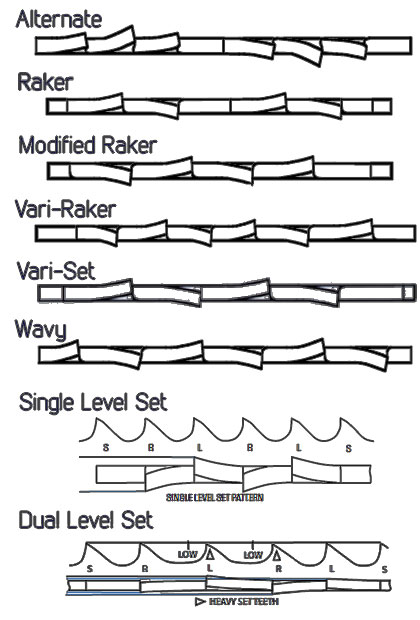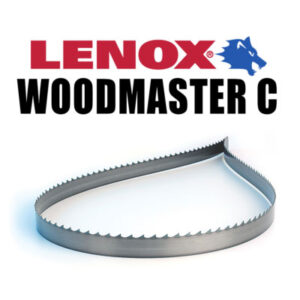Blade Tooth Set Guide
The tooth set of the band saw blade is the number of teeth and the angle at which they are offset. The blade’s tooth set affects the cutting efficiency and the chip carrying ability. There are many tooth set options with each blade type and width/thickness depending on the cutting application.

- Alternate: Every tooth in the tooth set is in an alternating sequence. This set is used for quick removal of the material and when the finish is not important.
- Raker: Three tooth sequence with a uniform set angle of Left, Right, & Straight.
- Modified Rake: Five or Seven tooth sequence with a uniform set angle for a better cutting efficiency and a smoother surface finish. Left, Right, Left, Right, & Straight. The order can vary by blade type or application.
- Vari-Raker: The tooth sequence is varied based on the tooth pitch and cutting application. This tooth set typically provides quiet and efficient cutting with a smooth finish and less burr.
- Vari-Set: The tooth height and set pattern varies with pitch and cutting application. The varying set magnitudes and angles of the tooth provides quieter operation with less blade vibration. The vari-set tooth pattern is efficient for difficult to cut materials and larger cross-sections.
- Wavy: A wavy tooth set is groups of teeth set to each side within and overall tooth set pattern. The blade teeth have varying amounts of set in a controlled pattern. This set is usually used to cut fine pitched materials with reduced noise and vibration when cutting thin materials in interrupted applications.
- Single Level: Set A single tooth height dimensioned blade geometry requires bending each tooth with the same amount of bend at the same position.
- Dual Level Set: A variable tooth height set blade geometry requires bending each tooth to variable heights and set magnitudes to achieve multiple cutting planes.
